6 different types of ESL learners and how to teach them
Adapt your lessons to cater for the different learning styles of your students
In this article we discuss the 6 different learner types and give practical ideas on how to adapt your lessons to cater for all learners.

When we are teaching English to kids, as teachers we need to be aware of the differences in learning styles of our students so that we can incorporate all of these learning styles into our lessons. Being able to identify which types of learners our students are will help us to make sure they don’t get left out of learning effectively.
Below are the 6 different learner types and details on different activities to suit their learning styles.
Visual learners
Visual learners learn best by looking. The enjoy reading (and often prefer to see the words they are learning) and seeing pictures.
Visual learners respond well to:
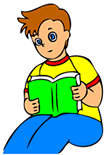
- information on the whiteboard
- flashcards
- [hide_on_uk]colorful[/hide_on_uk][hide_on_us]colourful[/hide_on_us] pictures
- videos
- story books with pictures
- computer graphics
- maps (e.g. treasure maps)
- charts
- cartoons
- posters
- board games
- worksheets
- puzzles
When teaching kids, we can ensure our visual learners are well catered for by having lots of visuals and a wide variety of things to look at. If you can, fill your classroom with [hide_on_uk]colorful[/hide_on_uk][hide_on_us]colourful[/hide_on_us], attractive posters. Make use of flashcards (we have lots on our website) and pictures when teaching new vocabulary. Use readers with lots of [hide_on_uk]colorful[/hide_on_uk][hide_on_us]colourful[/hide_on_us] illustrations. If you have the resources, use video and computer graphics. Whenever you are planning your lesson, think how you can visually stimulate your learners.
Auditory learners
Auditory learners learn best by listening. They work well with spoken instructions and learn quickly by listening to stories and songs. They will not need to see written words to learn.
Auditory learners respond well to:
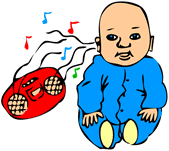
- songs
- listening to stories
- poems and riddles
- verbal instructions and explanations
- listening activities
- participating in oral activities
As audio learners tune in to sounds, try and provide as many opportunities to have sound and noise added to your lesson. Songs are an obvious source and encourage your learners to listen and sing along. If you can find a song which fits your lesson theme or target vocab, all the better – we have a growing selection of theme based ESL songs on our website. Using stories in lessons is something all kids love. There are lots of readers available, but you can also make up your own stories to fit in with your lesson (also try to add pictures for your visual learners).
Always think how sounds can be added to lessons, such as teach animal noises along with animal vocab, sounds of cars, airplanes, trains, etc. when teaching transportation, and so on. You’ll be surprised at the amount of sounds you can teach! Concentrate on pronunciation of sounds as well, from the letters of the alphabet to words and sentences – your audio learners will really pick up on this if you provide the opportunity. Also, do listening exercises which require students to listen to your instructions in order to complete a task (see our section on Top 10 ESL listening activities without a CD).
Always allow for oral communication during activities – set up pair or groups work together where your students have to talk and listen to each other to complete the tasks.
Tactile learners
Tactile learners learn physically by touching and manipulating objects.
Tactile learners respond well to:
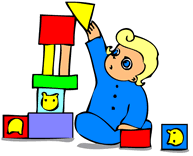
- drawing
- songs with gestures
- playing board games
- making models (e.g. with play-doh or lego)
- craft activities
- feeling in the bag activities
- following instructions to make things
Tactile learners need to feel and touch – without this they won’t internalize new vocabulary / structures as easily. Let them touch and feel everything! When using flashcards, always pass them around (you’ll see the tactile learners really come to life at this point). Have lots of objects available to teach new vocabulary (cars, plastic fruit, animal toys, blocks, colored paper, etc.) so when you teach new words you can let your students touch and play with the objects.
Use puppets for role playing structures and let your students touch, cuddle, tickle and even use the puppet themselves. Also, try setting up feeling type activities – place an object in a bag and have students feel and guess what it is, use blindfolds and have students feel things or find their way around the classroom.
Let your tactile learners express themselves by drawing and making things. Have them draw a scene with new vocabulary that they have just learned, or build and make things with lego or play doh. Crafts are also a great way to teach and reinforce new vocabulary.
Kinesthetic learners
Kinesthetic learners learn physically by moving around.
Kinesthetic learners respond well to:

- songs with gestures
- playing games in which they need to use their whole body (e.g. Charades)
- doing exercise type activities which require running and jumping
- movement activities
- making models (e.g. with play-doh or lego)
- craft activities
- following instructions to make something
- setting up experiments
Kinesthetic kids always want to be on the go. Just sitting and watching/listening won’t keep them interested for long. Have lots of gestures to use with songs and let them act out new vocabulary (e.g. teach “horse” and let your students run around like a horse, teach “eat breakfast” and have them pretending to eat cereal and toast, etc.).
Set lots of action activities which lets them express themselves with movement (see our Top 10 ESL flashcard exciting games & activities). Include craft and model making activities (your tactile learners will also thank you for this) and always encourage your students to experiment actively when learning new things – if a student wants to roll around on the floor like a ball when you are teaching the word ball, let him.
Analytic learners
Analytic learners focus on the details of language, such as grammar rules, and enjoy taking apart words and sentences.
Analytic learners respond well to:
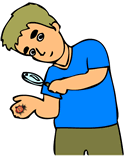
- well-structured and clear lessons
- information and instructions given in steps
- clearly stated goals and objectives of tasks
- activities which require thought, such as matching exercises, puzzles, missing letters, etc.
Your analytic learners will enjoy activities and tasks where they need to think and work on the specifics of the language. Play games like concentration with flashcards when learning new vocabulary, do worksheets with matching and word scramble activities. Play games on the whiteboard where student have to guess the missing letters of a word (hangman is a great choice). Give out alphabet letter blocks and have your students put the letters in alphabetical order and make words. When giving instructions, always take care to be clear and give step-by-step details.
For even very young learners they are a lot of things you can do which require some analytical thought: put [hide_on_uk]colored[/hide_on_uk][hide_on_us]coloured[/hide_on_us] fruit and [hide_on_uk]colored[/hide_on_uk][hide_on_us]coloured[/hide_on_us] paper around the room and ask your students to match the fruit with their [hide_on_uk]colors[/hide_on_uk][hide_on_us]colours[/hide_on_us] (red paper with red apple, etc.); put objects of different sizes and tell students to put large objects in one box and small objects in another (or soft / hard, heavy / light, etc.). Most activities can have a thoughtful element.
Global learners
Global learners focus on the whole picture and do not care so much about specific details. They do not want to get bored with slow moving lessons and enjoy interesting and attractive materials.
Global learners respond well to:
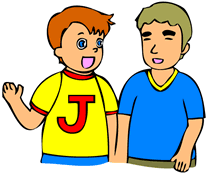
- games
- group activities
- story writing
- lots of action based activities
- computer/video games
- talking without being interrupted for correction
Make sure to include lots of fun games and activities for your global learners where the language learning objective is not so forced or obvious. Let them play with the objects or write stories simply for the fun of doing them (although they are still learning they won’t realize it). Get them working in pairs or groups to complete tasks and let them move around the class as they do their activity.
Global learners tend not to like being interrupted when doing their activity (why would they? It stops them doing what they are trying to do!) so correcting can be done at the end of the task or you could chat to the students during the task asking questions which are based on checking their understanding of the main teaching point.
Conclusion
You may have read the above and thought, “How on earth do I include all of these different learning styles in all of my teaching points and activities?”. Yes, there are a lot of different styles and many contradict each other – Analytic and Global learners, for instance, are at opposite ends of the spectrum. The key is to include different styles at different points of the lesson.
For example, when you teach some new words use flashcards and get all of the kids to listen to you and say the words clearly with associated noises (for the Visual and Auditory learners), then have the students run around acting out the words (for the Kinesthetic learners), next do a feel in the bag activity to guess the objects and then have your students do a drawing activity (for the Tactile learners), after that have your students in teams make models of the objects with play doh with a prize for the best team (for the Global learners) and finally have a worksheet activity where students need do matching or guessing activities (for the Analytic learners – be sure to clearly explain how to do the task).
You don’t have to include all learning styles for each teaching point, but try to include a variety of styles throughout the lesson so all of your students get catered for at some point.
Finally, if you are able to identify the type of learners you have in your class you can adapt your lesson on the spot if you see some are having trouble understanding or losing interest. For example, if a student is looking puzzled at your big / small presentation, have him or her stand up big or curl up small, make a big play-doh ball and small ball, [hide_on_uk]color[/hide_on_uk][hide_on_us]colour[/hide_on_us] in a worksheet with big and small objects, etc.
Having a wide variety of styles included in your lesson will really help your students understand, internalize and enjoy your lessons.
More ESL articles »
General articles
- 6 different types of ESL learners and how to teach them
- Dealing with bad [hide_on_uk]behavior[/hide_on_uk][hide_on_us]behaviour[/hide_on_us] in an ESL kids classroom
- Using graded readers in the ESL kids classroom
- Word lists: lists of the most commonly used English vocabulary
Top 10 lists
- Top 10 alphabet teaching tips for ESL kids teachers
- Top 10 ESL flashcard exciting games & activities
- Top 10 flashcard simple games & activities
- Top 10 ESL kids lesson plan routines for 7s and under
- Top 10 ESL kids lesson plan routines for 8s and over
- Top 10 ESL listening activities (without a CD)
- Top 10 supplies ands tools for an ESL kids classroom
- Top 10 tips for teaching English to toddlers
- Top 10 tips for using classroom readers in ESL kids lessons
- Top 10 worksheet time activities for ESL teachers and students
Holidays articles

